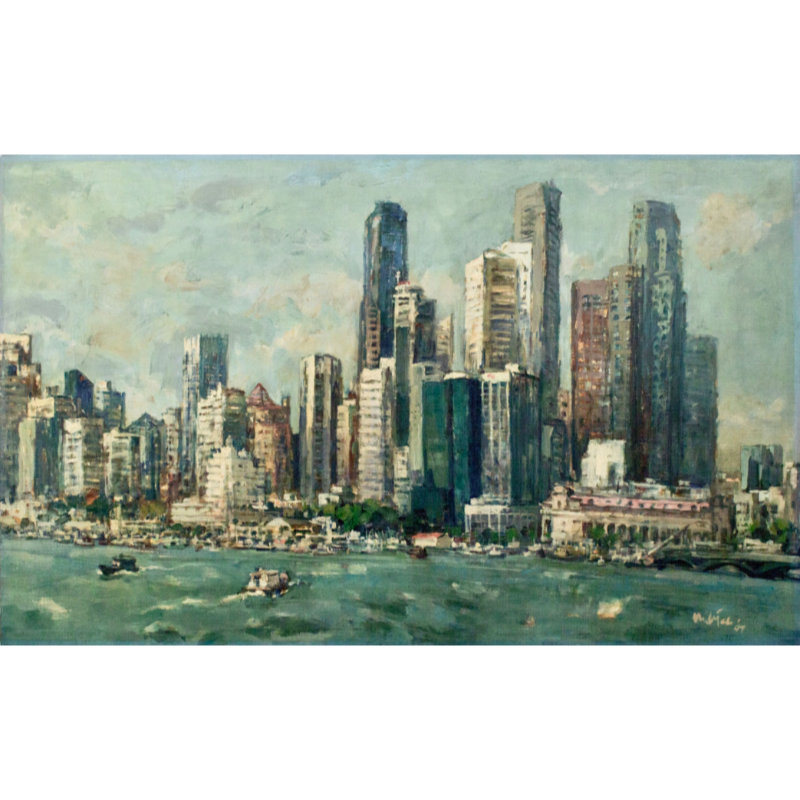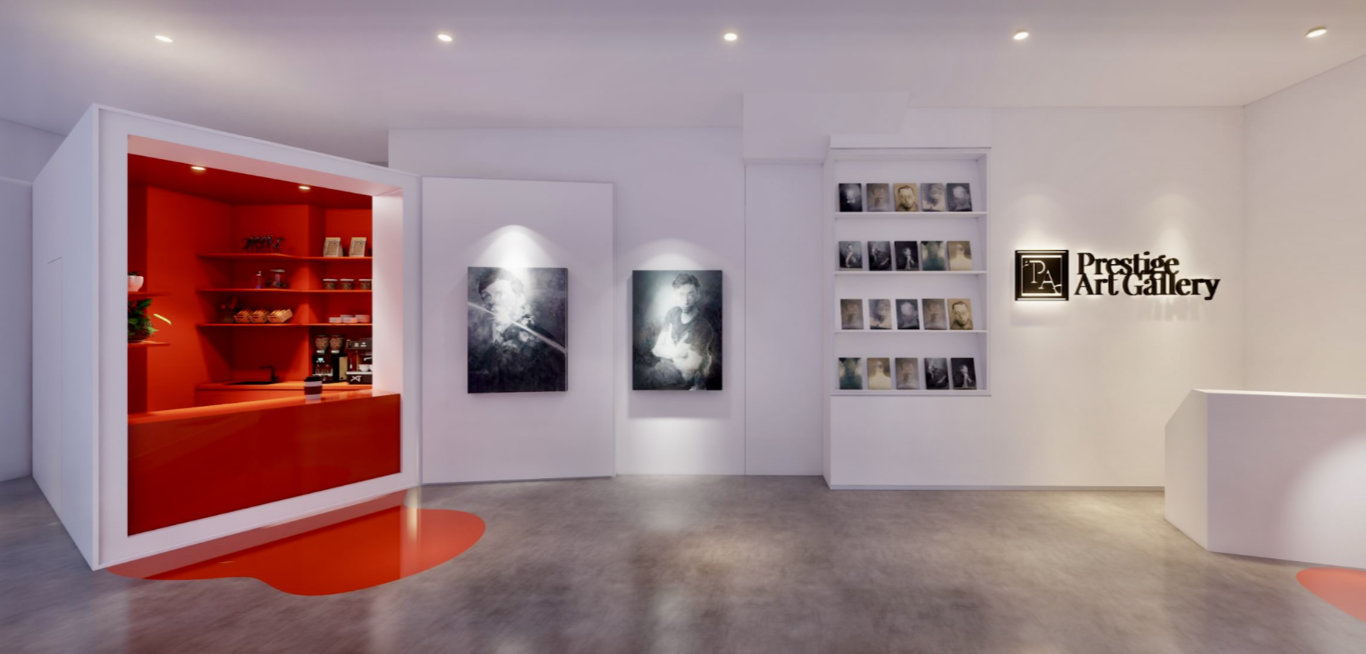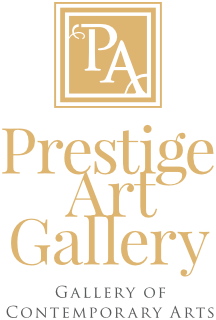Aw Tee Hong
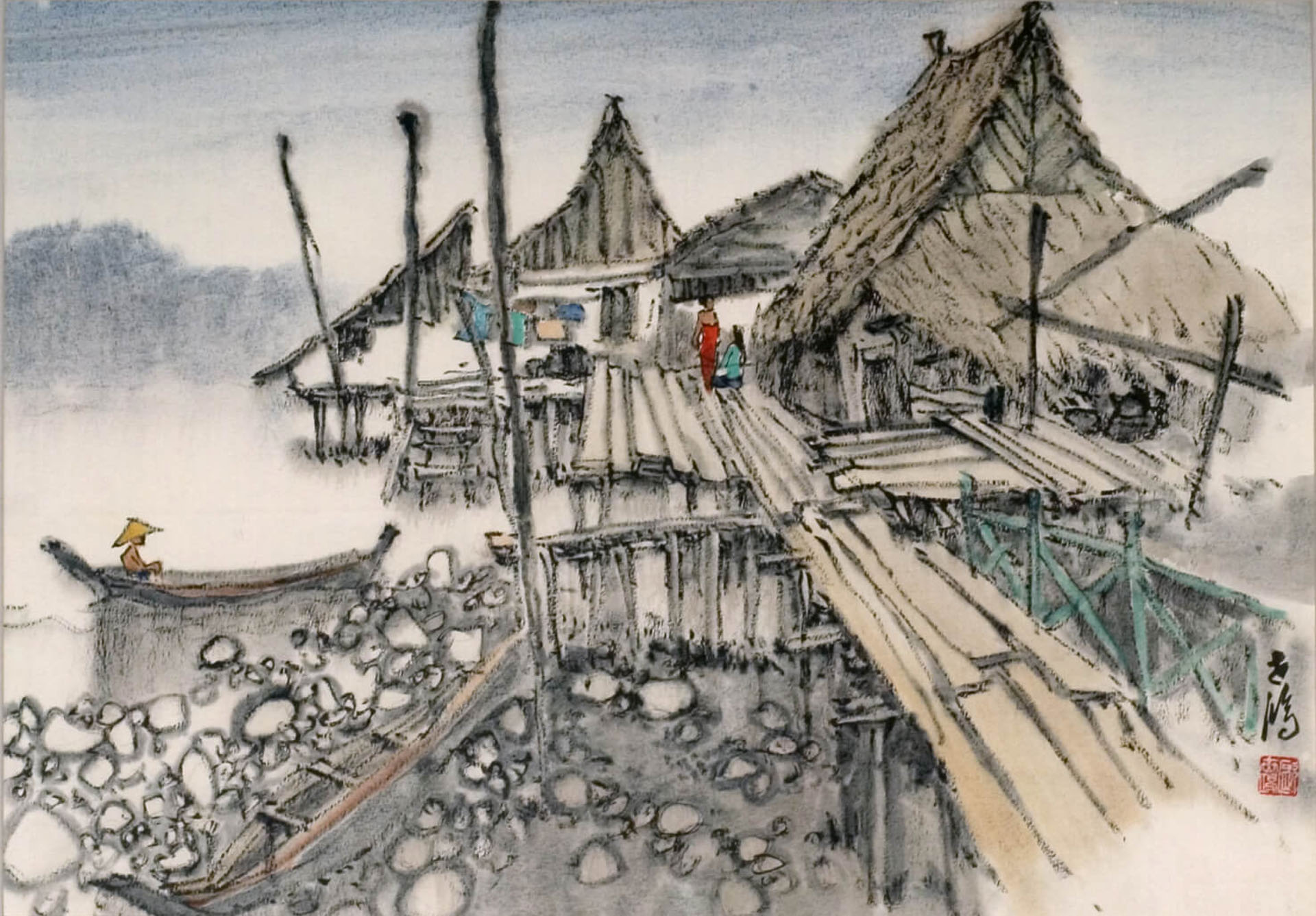
Fishing Village 1992 Ink and Pastel on Paper 72cm x 51 cm
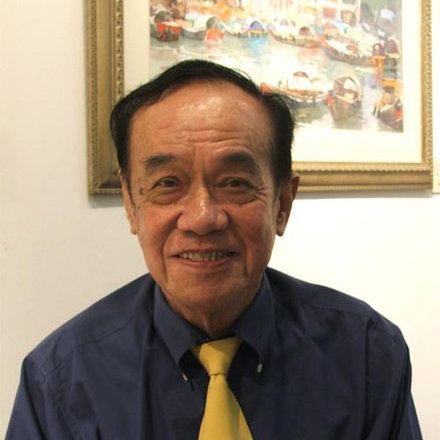
Aw Tee Hong
(1932 – 2021)
Details
1931
Born in Wenchang, Hainan, China
1939
Moved to Malaysia with family to escape the war
1954
Graduated from Nanyang Academy of Fine Arts, Singapore
1959
Graduated from Central Academy of Fine Arts, Beijing, China
1994
Visiting Professor at the Beijing Central Academy of Arts and Design, China
1996
Chairman of Singapore Sculpture Symposium
A Journey Through Art: Aw Tee Hong’s Artistic Odyssey
Aw Tee Hong (1932 – 2021) was born in 1931 in Wenchang, Hainan, China. Due to the impact of the Sino-Japanese War, he moved with his family to Kelantan, Malaysia in 1939. In 1950, he settled in Singapore and began studying art at the Nanyang Academy of Fine Arts. By 1956, he had further honed his skills at the Central Academy of Fine Arts in Beijing (now Tsinghua University Art College).
Upon returning to Singapore, Aw Tee Hong quickly made his mark in the local art scene with his unique artistic vision that bridged traditional and modern elements. His work often reflects the urban transformation and cultural heritage of Singapore. From early woodcut prints to later sculptures and bas-reliefs, his creations span various media and styles. Aw Tee Hong was not only an artist but also a catalyst for the development of Singaporean art, collaborating with the Singapore Tourism Board to create cultural products and promoting Singaporean art on the international stage.
In Between Colours: Aw Tee Hong’s Artistic Reflections
Art, to me, is not just a means of expression but a way of life. From the fields of Hainan to the bustling cityscape of Singapore, my artistic journey has been a continuous process of exploration and fusion. I studied Western painting at the Nanyang Academy of Fine Arts and later pursued further education at the Central Academy of Fine Arts in Beijing. During this period, I not only inherited the essence of traditional Chinese art but also absorbed the colours and techniques of Western Impressionism.
Each creation is a quest into my innermost self. I enjoy challenging myself with various materials and techniques, from early woodcut prints to later bas-relief works. Each piece is a result of my unique observations of the world. Through art, I hope to capture the changes of the times and share my love and understanding of Singapore and its culture with the audience.
The Heartbeat of Art: Exploring Cultural Resonance in the Works
Aw Tee Hong’s works are not merely artworks but testimonies to culture and history. His early woodcut prints depict scenes from Singaporean life, such as women in red attire and street vendors, showcasing the social landscape of the time. These works not only display the artist’s technical skills but also reflect his deep observation and understanding of Singaporean society.
In the 1970s, Aw Tee Hong began using industrial materials such as fibreglass and enamel, marking an innovation and breakthrough in his artistic media. His paper bas-relief works, particularly the marble bas-relief titled “Singapore Poetry,” exemplify his modern interpretation of traditional art. These public artworks not only beautify urban spaces but also provoke contemplation about Singapore’s culture and history.
Aw Tee Hong’s artistic journey is a testament to his continuous exploration of his artistic style and profound understanding of cultural heritage. His works not only exhibit his passion for art but also enable us to better understand and appreciate the unique culture of Singapore through his creations.
Coconut Village
1992
Ink and Pastel on Paper
72cm x 51cm
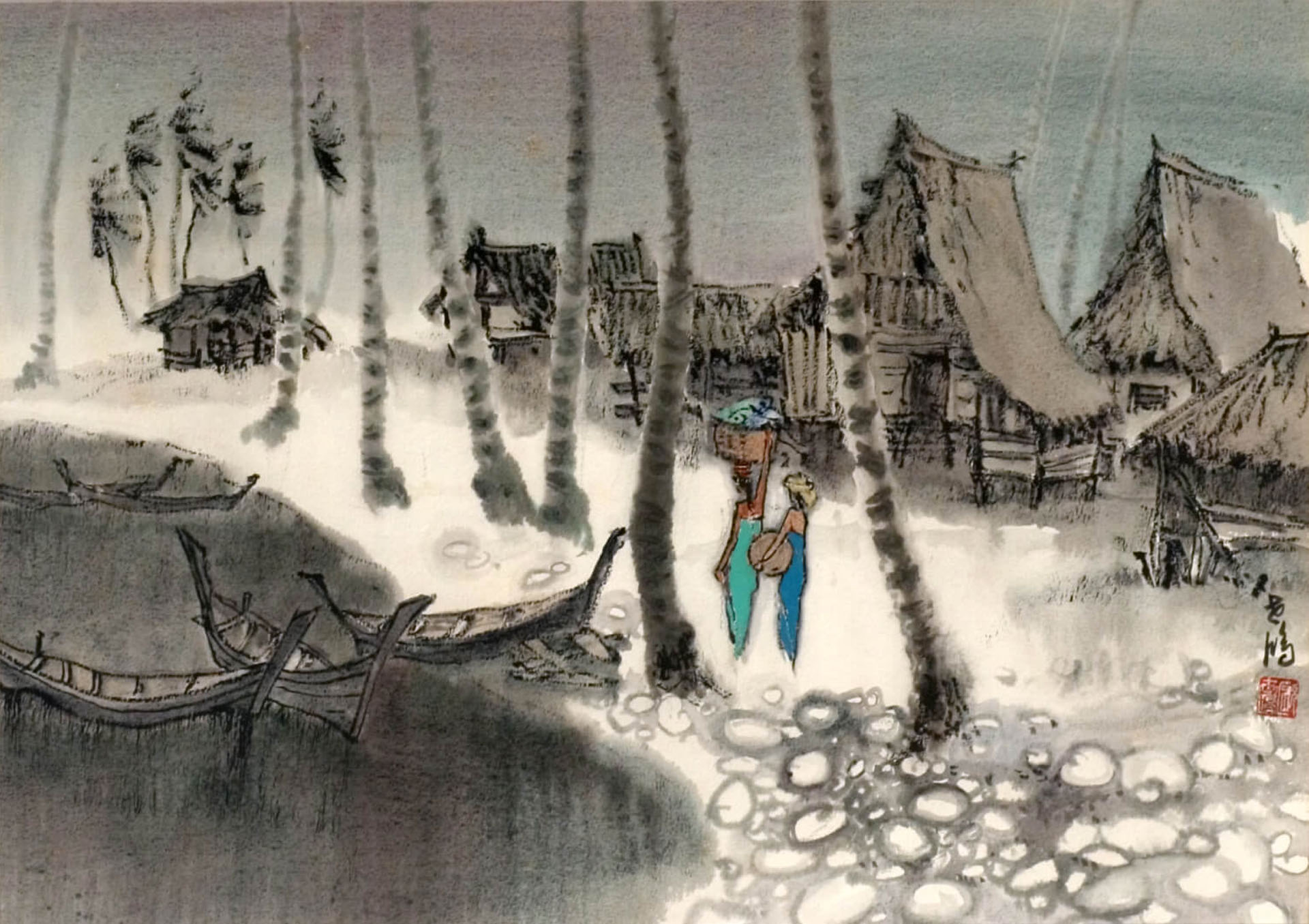
Singapore River
1982
Oil on Canvas
38.5cm by 49.5cm
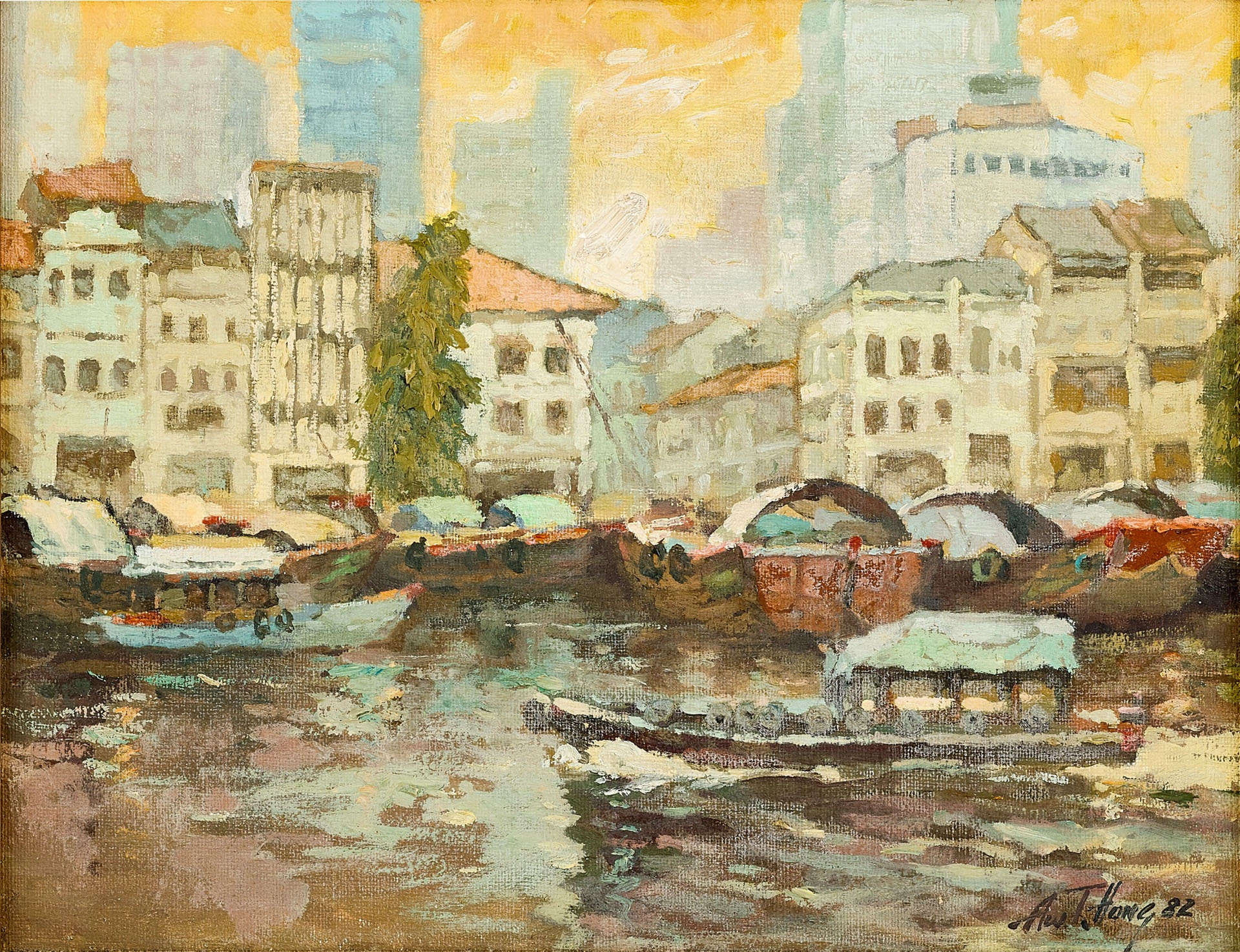
Trengganu Street
2006
Acrylic on Canvas
54cm x 122cm
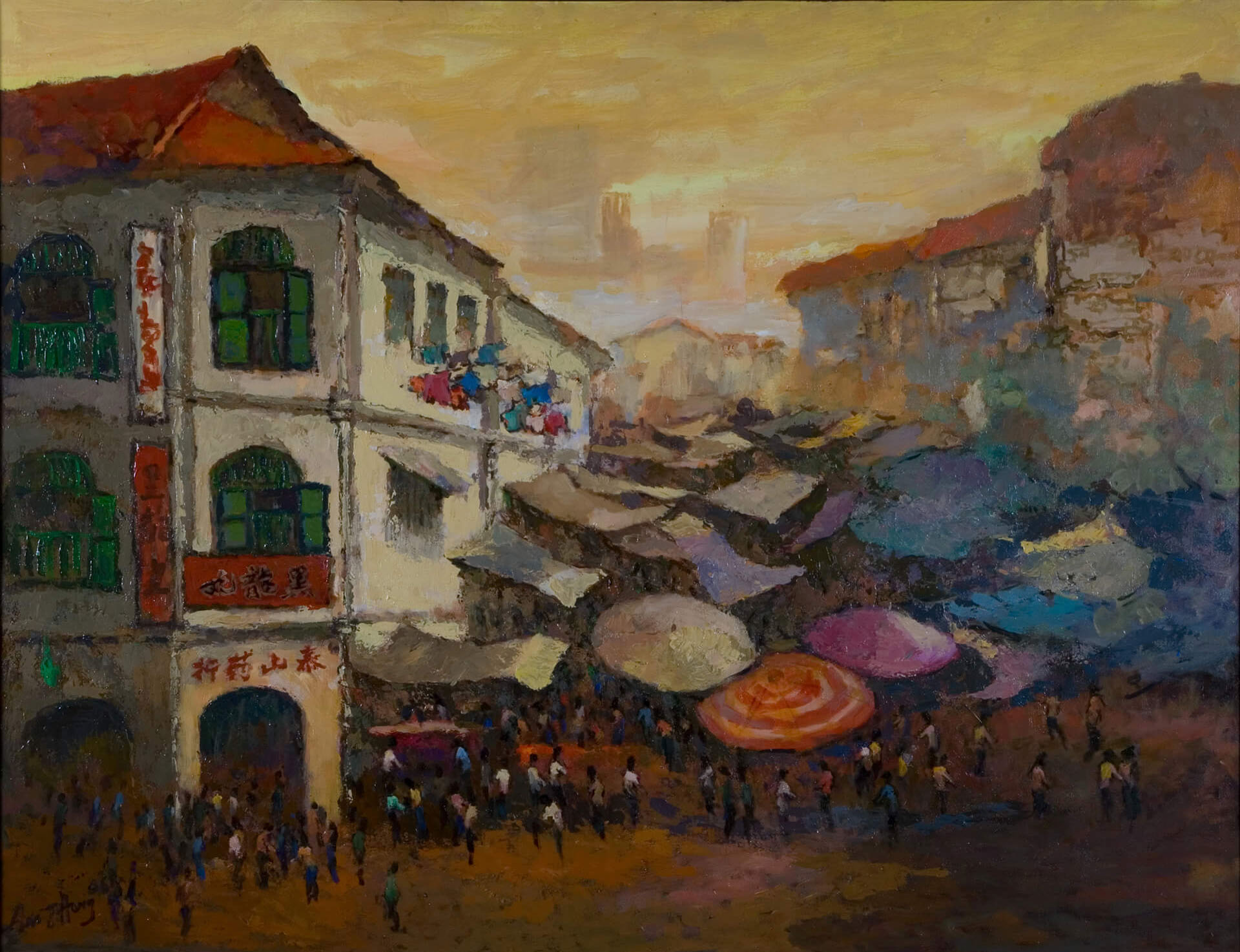
Myanmar River
2009
Acrylic on Canvas
62cm x 51cm
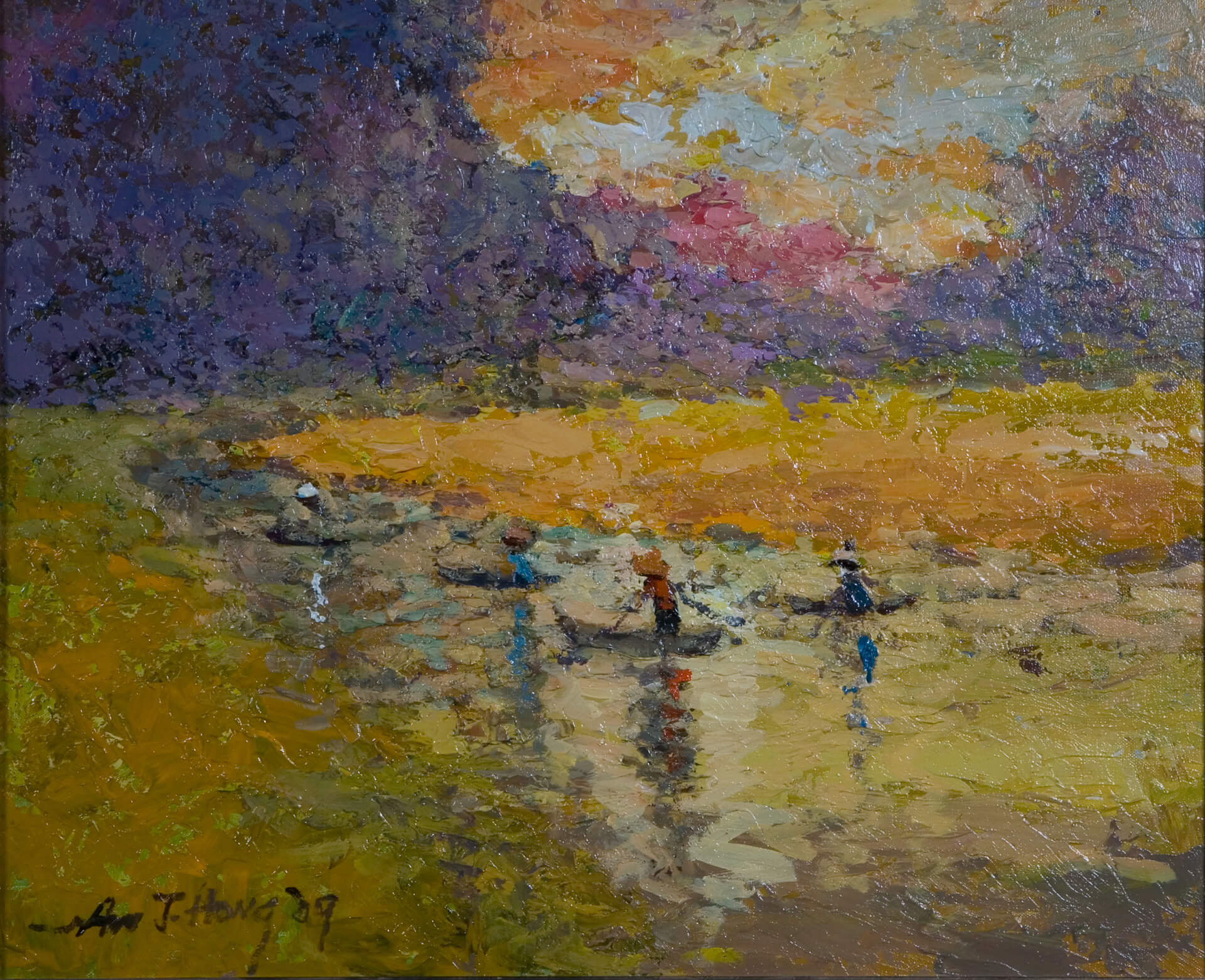
Exhibitions
Past
Aw Tee Hong | Chen Cheng Mei | Lim Hsin Hsin | Tan Choh Tee | Wang Guoping
23 May - 31 Dec 2024
11am to 6pm (excluding public holidays)
OCBC Bank Wisma Atria #04-01
Singapore

